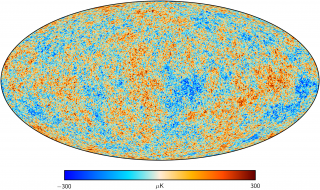Bibcode
Wuensche, Carlos A.; Villela, Thyrso; Abdalla, Elcio; Liccardo, Vincenzo; Vieira, Frederico; Browne, Ian; Peel, Michael W.; Radcliffe, Christopher; Abdalla, Filipe B.; Marins, Alessandro; Barosi, Luciano; Brito, Francisco A.; Queiroz, Amilcar R.; Wang, Bin; Costa, Andre A.; Ferreira, Elisa G. M.; Fornazier, Karin S. F.; Landim, Ricardo G.; Novaes, Camila P.; Santos, Larissa; dos Santos, Marcelo V.; Zhang, Jiajun; Chen, Tianyue; Delabrouille, Jacques; Dickinson, Clive; de Gasperis, Giancarlo; Gurjão, Edmar C.; Harper, Stuart; Ma, Yin-Zhe; Machado, Telmo; Maffei, Bruno; de Mericia, Eduardo J.; Monstein, Christian; Motta, Pablo; Otobone, Carlos H. N.; Reitano, Luiz A.; Remazeilles, Mathieu; Roychowdhury, Sambit; Santos, João R. L.; Serres, Alexandre J. R.; Souza, Andreia P.; Strauss, Cesar; Vieira, Jordany; Xu, Haiguang
Bibliographical reference
Astronomy and Astrophysics
Advertised on:
8
2022
Journal
Citations
30
Refereed citations
23
Description
Context. The measurement of diffuse 21-cm radiation from the hyperfine transition of neutral hydrogen (H I signal) in different redshifts is an important tool for modern cosmology. However, detecting this faint signal with non-cryogenic receivers in single-dish telescopes is a challenging task. The BINGO (Baryon Acoustic Oscillations from Integrated Neutral Gas Observations) radio telescope is an instrument designed to detect baryonic acoustic oscillations (BAOs) in the cosmological H I signal, in the redshift interval 0.127 ≤ z ≤ 0.449.
Aims: This paper describes the BINGO radio telescope, including the current status of the optics, receiver, observational strategy, calibration, and the site.
Methods: BINGO has been carefully designed to minimize systematics, being a transit instrument with no moving dishes and 28 horns operating in the frequency range 980 ≤ ν ≤ 1260 MHz. Comprehensive laboratory tests were conducted for many of the BINGO subsystems and the prototypes of the receiver chain, horn, polarizer, magic tees, and transitions have been successfully tested between 2018-2020. The survey was designed to cover ∼13% of the sky, with the primary mirror pointing at declination δ = −15°. The telescope will see an instantaneous declination strip of 14.75°.
Results: The results of the prototype tests closely meet those obtained during the modeling process, suggesting BINGO will perform according to our expectations. After one year of observations with a 60% duty cycle and 28 horns, BINGO should achieve an expected sensitivity of 102 μK per 9.33 MHz frequency channel, one polarization, and be able to measure the H I power spectrum in a competitive time frame.
Aims: This paper describes the BINGO radio telescope, including the current status of the optics, receiver, observational strategy, calibration, and the site.
Methods: BINGO has been carefully designed to minimize systematics, being a transit instrument with no moving dishes and 28 horns operating in the frequency range 980 ≤ ν ≤ 1260 MHz. Comprehensive laboratory tests were conducted for many of the BINGO subsystems and the prototypes of the receiver chain, horn, polarizer, magic tees, and transitions have been successfully tested between 2018-2020. The survey was designed to cover ∼13% of the sky, with the primary mirror pointing at declination δ = −15°. The telescope will see an instantaneous declination strip of 14.75°.
Results: The results of the prototype tests closely meet those obtained during the modeling process, suggesting BINGO will perform according to our expectations. After one year of observations with a 60% duty cycle and 28 horns, BINGO should achieve an expected sensitivity of 102 μK per 9.33 MHz frequency channel, one polarization, and be able to measure the H I power spectrum in a competitive time frame.
Related projects

Anisotropy of the Cosmic Microwave Background
The general goal of this project is to determine and characterize the spatial and spectral variations in the temperature and polarisation of the Cosmic Microwave Background in angular scales from several arcminutes to several degrees. The primordial matter density fluctuations which originated the structure in the matter distribution of the present
Rafael
Rebolo López